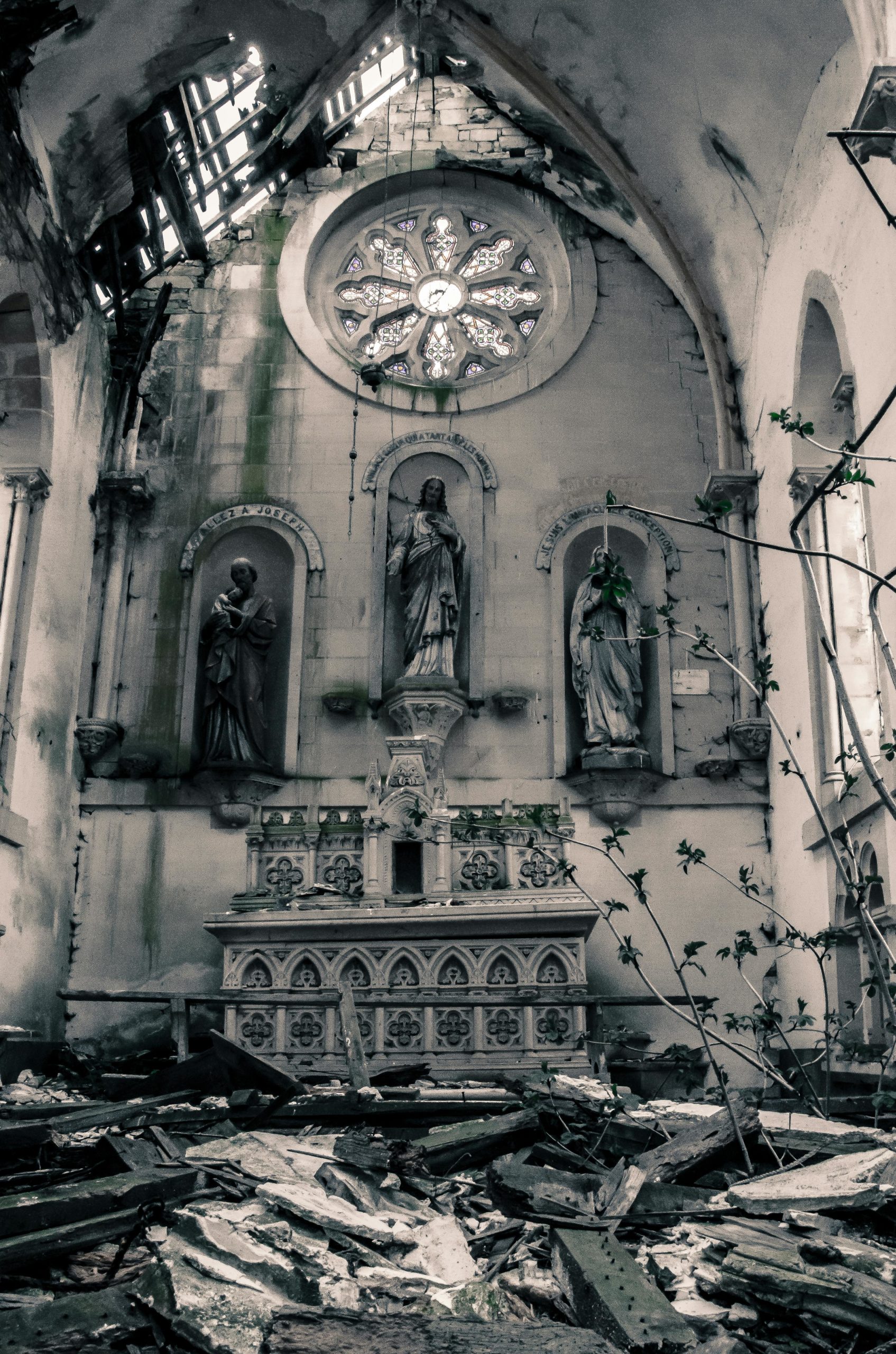
Image adapted from Wikicommons by DhLeaks44 / CC BY-SA 4.0
“Have We Gone Too Far By Tearing Down Religious Monuments?”
Adrienne Phillips
Religious statues and monuments are prominent cultural, historical, and ecclesiastical focal points around the world. People travel thousands of miles to view them, express their religious devotions, or just admire the beauty. Lately, there has been a surging movement to take down statues and monuments across the United States. Many of these statues represent the long history of racism in America. People have reacted to teardowns contentiously, with both happiness and anger. Lawsuits are even being filed.
There is also a criminal law aspect to these statue removal efforts. Charges filed against protesters that have torn down statues have varied from state to state. For example, four people in the District of Columbia were charged with destruction of federal property for attempting to take down an Andrew Jackson statue. In response, an FBI agent expressed his concern for violence and property destruction, pledging to keep working with others to enforce federal law and prevent further damage. In North Carolina, a man was arrested for felony riot in connection with two Confederate monuments being destroyed. With more statues and monuments being protested and taken down, it seems likely that more arrests will be made and more criminal charges filed.
Confederate statues representing racism are not the only monuments caught in controversy. Religious monuments are being targeted, too. Anthony Weimer, a thirty-year-old Montana man, was recently arrested for using a chain tied to his pickup truck to tear down taking down the Flathead County courthouse’s Ten Commandments monument. He was charged with felony criminal mischief. The monument was given to the county in 1950 by the Fraternal Order of the Eagles. In 2011, a request was made to the Kalispell City Council to take custody of the statue. The request was denied due to the fear of an Establishment Clause lawsuit. The authorities are not sure what motivated Mr. Weimer.

Other religious statues and monuments have met similar fates. St. Junipero Serra statues were taken down by protestors in California, and protestors in Washington, D.C. defaced St. John’s Episcopal Church, saying that this “was a way of scoring restitution for slave owners who were Episcopalian.” There have also been calls for statues depicting Jesus Christ to be destroyed. Well-known left-wing activist Shaun King claimed that statues, murals, and stained glass depicting “white Jesus, and his European mother, and their white friends should also come down,” because they symbolize “white supremacy.” The Catholic bishop of Madison, Wisconsin was angered, saying, “Should certain statues be placed in museums or storage? Perhaps. Should we let a group of vandals make those decisions for us? No.” He further noted “that every culture, country, ethnicity, and race ‘has claimed Jesus and the Blessed Virgin Mary as their own,’ depicting them with their culture’s skin color and dressed in their culture’s garb.”
Some religious people, however, have responded more aggressively, showing violent rage similar to that of certain protestors. Mr. King said that after he expressed his opinion about white depictions of Jesus, “received about 500 literal death threats from white ‘Christians’ who want me to know that they will kill me before they will ever take down their statues of white Jesus.”
Government officials have taken notice of the increased violence and responded with changes in policy to increase criminal penalties. President Donald Trump signed an executive order providing for maximal prosecution for “any person or group that destroys or vandalizes a monument, memorial, or statue,” with prison sentences of up to ten years. The order also provides that law enforcement agencies that do not protect statues, monuments, or memorials will lose federal support, and that federal personnel will help provide protection. The President calls damage to monuments “violent extremism” resulting from “the behavior of totalitarians and tyrants and people that don’t love our country.” After signing the order, President Trump tweeted support for “[l]ong prison terms for these lawless acts against our Great Country!”
Apart from the order, the federal Veterans’ Memorial Preservation and Recognition Act of 2003 provides criminal penalties of up to ten years in prison for destroying or attempting to destroy veterans’ monuments.
The violence and destruction pose the question of whether destroying religious monuments is excessive. America was founded on the First Amendment’s guarantees of freedom of religion and freedom of speech. Some practice their freedom of religion by erecting these monuments to show their devotion. Besides, religious monuments are not necessarily divisive. For example, “Ten Commandments monuments . . . have been a tool for building Catholic, Protestant and Jewish unity in America.”
Although it is noted there is the risk of public religious monuments sending messages that certain faiths might be preferred over others, destroying religious monuments might end up offending religious people. Religious monuments represent historical moments and are worthy of commemoration, and they represent America’s tolerance of majority and minority religions. They also represent sacrifices and suffering that many religious people had to endure in order to practice their faith. Removing religious statues also undermines protestors’ goal of racial equality.
Catholic bishop of Spokane, Washington Thomas Daly put it best. Concerning the destruction of the statue of St. Junipero Serra, he said, “The Church, by no means, desires injustice to go unanswered, but two wrongs do not make a right.” If a statue of Jesus Christ really does represent white supremacy to some people and offends them, then who can judge them? However, violence in response to violence – including violent teardowns of religious monuments – will not solve the issues at hand. It is best to take a step back and listen. Only then can people better understand others’ viewpoints and create a more amicable solution. ♦

Adrienne Phillips is a rising third year law student at Emory University School of Law. She is currently serving as Chief of Staff for the Journal of Law and Religion.
Recommended Citation
Phillips, Adrienne. “Have We Gone Too Far By Tearing Down Religious Monuments?” Canopy Forum, August 7, 2020. https://canopyforum.org/2020/08/07/have-we-gone-too-far-by-tearing-down-religious-monuments/

